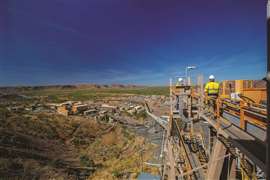How AEC firms can minimise the risk of IT downtime
31 October 2023
The AEC industry requires a lot of processing power to run its critical software such as Revit, Microstation, Rhino, SolidWorks, etc.
 Image: Adobe Stock / kokliang1981
Image: Adobe Stock / kokliang1981
Traditionally, these CAD and 3D modelling programmes sit on powerful fixed, physical tower workstations connecting to on-premises servers to ensure an adequately fast connection to design files.
When downtime occurs at such a location, it’s a serious problem, because this legacy technology then just stops work in its tracks.
As someone who has been providing IT services to the AEC industry for many years (and am therefore responsible for the uptime of systems), the threat of downtime can bring on a cold sweat; the barrage of query/ complaint/demand emails and calls and the pressure to get things back up and running again as soon as possible.
Downtime is a frantic experience for all involved. But it shouldn’t be, for two reasons: first, downtime – to some extent – is inevitable, and firms should expect this; and second, the risk of extended downtime can be minimised by sensible strategic planning and putting in place the right systems.
If you prepare and communicate well with all relevant parties, you can manage the (hopefully rare) situations when downtime occurs with more confidence and understanding.
Why does downtime occur?
There are four main scenarios that AEC firms are likely to experience:
- Power outage – Whether it’s down to adverse weather conditions, equipment failure, human error or something unexpected (we once had an annual disaster recovery test ruined by a random Canadian Geese strike), power outages can stop premises systems – which often only have a single source of power – dead in their tracks. Having only one source of power is one of the biggest risk factors.
- Network problems – Hardware failure, misconfiguration, dodgy cables, network loops. It’s critical that your organisation uses the proper expertise to manage your network which can easily be taken out by one person plugging in a cable in the wrong place. And networks in large organisations can be extremely complicated, which can often extend downtime due to the time required to identify root causes. Expertise, documentation, monitoring. It’s important to cover all the basics.
- Internet outage – Many, if not most, of our systems now rely on connectivity so losing net access can be paralysing. As above, the key here is not to have critical systems supported by a single feed. Dual feeds and diverse suppliers will provide the necessary redundancy.
- Hardware failure – All hardware has a lifespan. And all hardware components can fail. If you can afford it, ensure hardware redundancy and maintain this in an appropriately managed environment. Keep your equipment cool.
How hosted solutions can reduce the risk of downtime
Limiting the exposure that your system has to these four key risk elements is your best way to reduce the risk of downtime in your organisation.
 Tim Whiteley, co-founder of Inevidesk. Photo: Inevidesk
Tim Whiteley, co-founder of Inevidesk. Photo: Inevidesk
Hosted solutions, for example, are an easy way to reduce the likelihood of downtime. That’s because they are typically held in physically secure, environmentally managed data centres with extensive redundancy for the common points of failure, which generally includes dual and diverse power feeds, backup generators, dual and diverse connectivity, high availability configuration of equipment and more.
Hosted infrastructure also reduces dependency on your office infrastructure, which will likely only have one power and internet feed. And while datacentre hosting may be more expensive than on-prem options, there exists a range of options and suppliers to meet different budgetary requirements from public to private cloud arrangements.
It’s not a one size fits all solution and it’s important for any organisation to find the right balance of price, risk mitigation and operational fit.
To give you an example, a London-based architectural company, Cullinan Studio, moved its entire server infrastructure and workstation resources to the cloud to build resiliency and ensure that no matter where employees were based, they could continue working on the same infrastructure with the same high level of performance.
This also enabled the firm to make better use of its building, as it was able to pull its own office footprint back to just one of the building’s three floors and use the newly-freed space to create a multi-disciplinary hub that it could sublet to tenants as a revenue driver.
A hosted future
The reality is that much of the AEC industry is too reliant on legacy technology and until this changes, extended downtime will remain a common threat for firms across Europe, no matter how well managed their infrastructure.
Legacy on-premises technology, including physical workstations, will be affected by hardware failure and power and network outages.
Hosted platforms provide a viable alternative that address many areas of vulnerability and their potential impact, providing firms with, hopefully, more confidence in their systems when, and if, downtime occurs.
STAY CONNECTED


Receive the information you need when you need it through our world-leading magazines, newsletters and daily briefings.
CONNECT WITH THE TEAM










